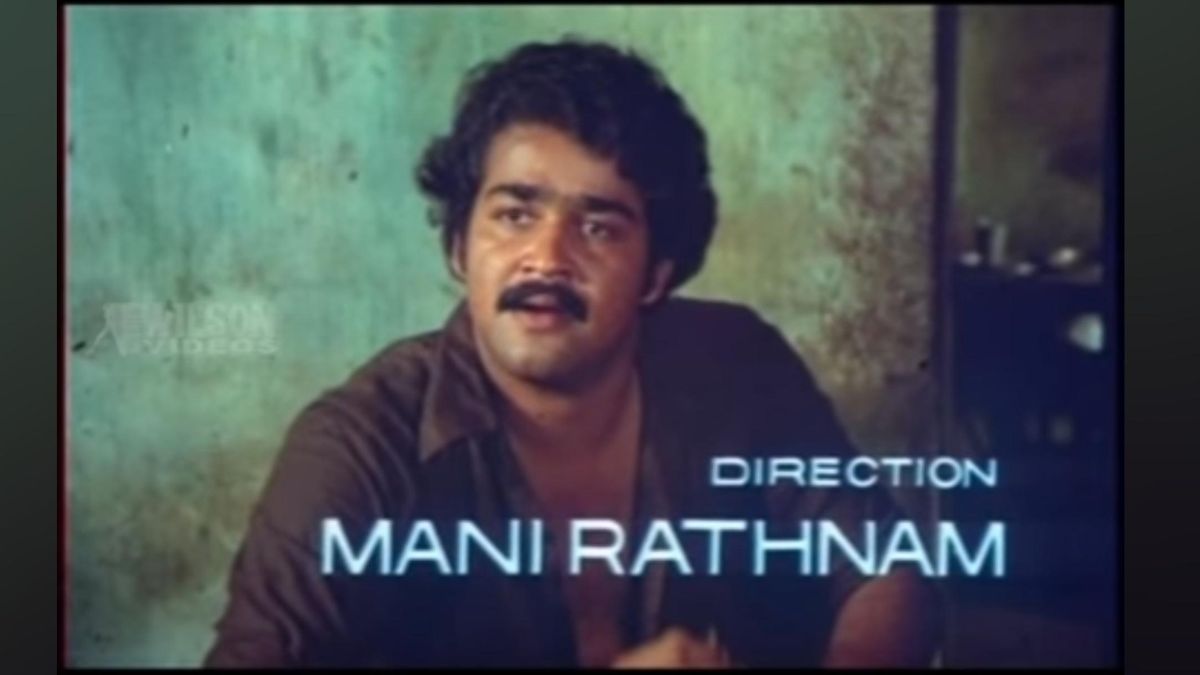Revisiting 'Unaroo', Mani Ratnam's only Malayalam film (with Mohanlal, before 'Iruvar')

A young man, Ramu, wanders the streets of Kochi in search of a job. Wherever he checks, he is asked if he is a union member. No, Ramu says. Only those with a union card get on the employment priority list, he is told. A while later, at a tea stall, a man asks — no, demands — Ramu to part with his matchbox. Ramu asks if he is a union member. No, comes the reply. Guess what Ramu says. A freeze-frame follows: Direction - Mani Rathnam (yes, with an 'h'). Mohanlal is Ramu, three years before he turned a superstar in Rajavinte Makan.
First off, to make something clear, this is not a piece that wonders what the "real" politics of a filmmaker is or whether the film's ideology is different from that of its director. That is for others to do. (There exist filmmakers who don't practice what they preach, so let's not put any filmmaker on too high a pedestal for validating the ideology we believe in.) This piece is purely intended to discuss what this film does and what it represents — its themes and how they show up in the filmmaker's later work, its ideology, its actors, and its storytelling approach...
Watching a Malayalam film directed by Mani Ratnam took some time. I mean, how many people (or Mani Ratnam fans, for that matter) go around talking about Unaroo (1984), his second? Everyone seems more interested in obsessing over the most popular ones made in Ratnam's native language. Naturally, this means one is bound to overlook his relatively underseen and underappreciated past work until a natural urge to see it out of curiosity compels one.
Let's first acknowledge Ratnam's daringness to take on a film in a different language as his second project. (Remember, he made his debut with a Kannada film.) Unaroo was scripted by T. Damodaran, known for his numerous associations with director I.V. Sasi, who used to make at least three films a year at one point — that too on film cameras. (Can you imagine any South Indian filmmaker putting out at least two films in the same year with the same discipline and advanced technology we have today?).
In his writing heyday, Damodaran, who made waves with his politically charged work in I.V. Sasi's Angadi (1980) and Ee Naadu (1982), demonstrated a degree of complexity and richness rarely found in today's filmmakers. This quality may have impressed Ratnam when he was contacted by producer NG John, who was coming off another Damodaran-scripted film, Iniyengilum (1983), starring Mohanlal, Ratheesh and Mammootty.
The first two, along with fellow cast members Lalu Alex, Balan K Nair and T.G. Ravi, play some of the key characters in Unaroo, a story based in Kochi, Kerala — about unemployed men and women, struggling dock workers, corrupt unions, exploitation, crony capitalism and more. That Ratnam and Damodaran chose to tell this story in a place associated with a dark chapter in Kerala history — the Mattancherry police firing incident of 1953 — is admirable. (Rajeev Ravi's Thuramukham, starring Nivin Pauly, is a chronicle of this incident. But, in my book, Unaroo, is a more coherent and clear film.)
From the moment the film brings together Ramu and Peter (Ratheesh, a frequent co-star of Mohanlal and Mammootty) to their eventual split and culminates in a blood-boiling tragic event that triggers the mobilisation of a workers' group, Unaroo contains themes Ratnam would explore again in some of his most iconic films, chiefly Nayakan, Thalapathi, and Iruvar. When, for instance, Peter welcomes the orphan Ramu to his home, one cannot help but think of Mammootty and Rajinikanth in Thalapathi. Furthermore, the disapproval of a man's violent ways and an interfaith relationship in Unaroo are other motifs in Ratnam's later work. (One also imagines his upcoming Thug Life, with Kamal Haasan, revolving around familiar themes.)
Unaroo also reminds us that Ratnam has worked with Prithviraj and his father Sukumaran. The latter, as Janardhanan, an advocate who helps Ramu and Peter (Ratheesh) set up a union of unemployed men, is one of the most complex grey-shaded characters ever portrayed on film. Through this character and a few others, Unaroo takes the opportunity to be critical of all political parties — basically, any institution that started with good intentions that ultimately lost its way due to selfishness and vested interests. We begin to see that some of the helpless characters that earned our sympathy at the beginning slowly turn into the very people we once despised.
Some of the strongest, most significant scenes in the film are elevated by actors with relatively shorter runtimes, like Balan K Nair or the then up-and-coming younger crop of actors like Ashokan ("Anantaram") or Krishnachandran (notable playback singer and dubbing artist). Nair, for instance, has a great scene in which he laments the downfall of some promising enterprises caused by political upheavals. Ratnam infuses these scenes with a strong sense of history and vividity. When Nair points to a once hustling and bustling area that now resembles a graveyard after the decisions of some individuals curtailed its progress, we can almost picture what he is describing. Imagine, this film came out in 1984, and the scene brings up the bitter memory of an NRI businessman's suicide in 2019.
Unaroo, which means 'wake up', has the unique distinction of being a Mani Ratnam film that doesn't look like a Mani Ratnam film. Had his name not appeared under the directing credit, I would've assumed it was I.V. Sasi. It is, I think, Ratnam's most grounded work. That's a good thing because any embellishments would've probably distracted from the characters and storytelling.
Entertainment